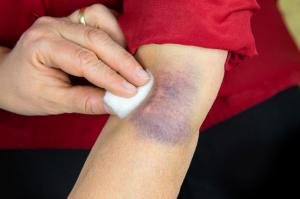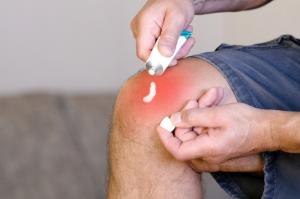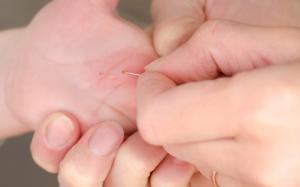
When most people decide to heal themselves with herbs, they typically think about taking them internally. However, if there’s a problem or pain in a particular part of the body, doesn’t it make sense to apply the remedy directly to the afflicted area? In this issue of Sunshine Sharing, you’re going to learn you how to speed healing for a variety of health problems using topical applications of herbs and essential oils.
Methods for Using Remedies Topically
There are many different ways to use remedies topically. Here is a brief description of various methods of topical application and how to use them.
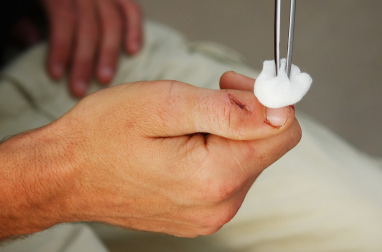 Compresses and Fomentations
Compresses and Fomentations
A compress is simply a cotton ball or gauze pad soaked in a liquid and applied to an area of the body. A fomentation is like a compress, but generally uses a piece of cloth like a washcloth or a towel to cover a larger area of the body. Compresses are generally applied to injuries and fomentations are used for rashes, skin eruptions or diseases, poison oak or ivy, or other conditions affecting a large area of the body.
Compresses can be made by making an infusion or decoction (tea) of an herb. You then soak the cotton, gauze, or cloth in the liquid and apply it directly to the affected area. You can also put an herbal tincture or extract directly on a gauze pad or cotton ball and apply it as a compress. You can also dilute tinctures with water to make fomentations.
Compresses and fomentations can be applied either warm or cold, depending on the need. Cold applications are better for soothing heat and inflammation, warm applications for easing pain and reducing swelling. As soon as the application either cools down or warms up, you can squeeze out the liquid and make another application.
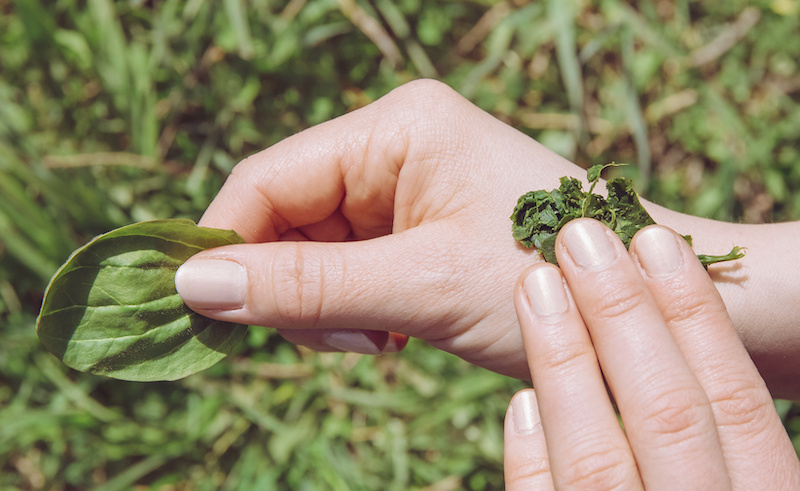 Poultices
Poultices
A poultice is a mixture of crushed herbs applied topically. You can make a poultice from fresh herbs by simply crushing, chopping, or mashing the leaves or other plant parts and applying them to the afflicted area.
To make a poultice with dried herbs, you need a base of mucilaginous herbs like aloe vera, comfrey root, slippery elm, or marshmallow. You can also use a fine clay as the base. These base materials make the poultice stick together.
Other therapeutic herbs can be added to the base, such as goldenseal or echinacea for infection, astringents like white oak bark or bayberry to tone the skin, or plantain or activated charcoal to draw out toxins. You can also add herbal tinctures or essential oils. To complete the poultice, add enough water to form a thick paste, which is applied topically to the afflicted area.
Poultices are usually covered with a gauze bandage or other dressing to help hold them in place and keep them from staining clothing. You can also cover them with plastic wrap. Change the poultice every four to eight hours. For treating bites and stings, change the poultice hourly.
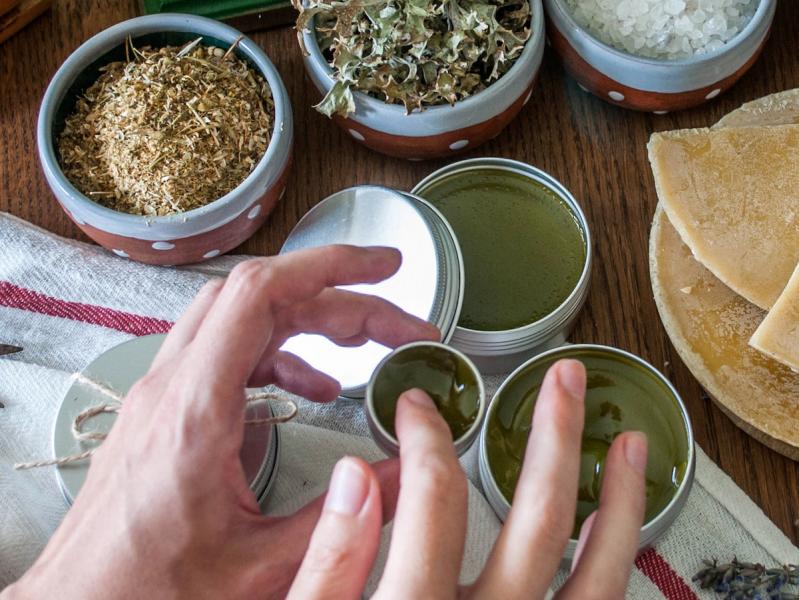 Oils, Lotions, and Salves
Oils, Lotions, and Salves
Herbs can be extracted in oil for topical application or turned into lotions or salves. It can be convenient to purchase herbal oils, but you can also make your own if desired.
The easiest way to make an herbal oil is to place the dried herbs to be extracted in a crock pot. Add just enough oil to cover them. Olive oil is generally a good choice, but other oils can be used as well. Turn the crock pot on low and leave the herbs in the oil for 12-24 hours. Let the oil cool before straining out the herb material using some type of cloth.
Lotions are made by mixing the oil with other liquid ingredients and an emulsifier (like lecithin) to make the oil and water mix. It’s sort of like making homemade mayonnaise.
You can also make an instant lotion by adding essential oils to a fixed oil like olive oil or coconut oil. You can also mix essential oils with an unscented lotion for topical use.
Salves are made by adding melted beeswax to a warm herbal oil and stirring the mixture until it begins to harden. Essential oils can also be added just before the mixture starts to thicken.
Baths and Soaks
An herbal decoction can be used to soak part or all of the body for various healing purposes. To make a decoction add herbs to a large pot of water, bring the water to a boil, reduce the heat and allow the herbs to simmer for 30-60 minutes. When the decoction cools enough you can soak feet, hands, or other body parts in it. You can also add it to the bath water for an herbal bath.
Essential oils can also be used in baths or soaks. Mix the oils with a small amount of a natural, unscented soap, such as a Castile soap, before adding them to the water. You can also mix them with Epsom salts.
Additional Resources
Modern Herbal Dispensatory by Steven Horne and Thomas Easley
Home Remedies: Hydrotherapy, Massage, Charcoal, and Other Simple Treatments by Agatha Thrash and Calvin Thrash
Cancer Salves by Ingrid Naiman
Strategies for Health by Steven Horne
Become a Member
Steven Horne's monthly member program is a way for you to get great information about herbs and natural healing to build your herbal business. Including the ability to share issues of Sunshine Sharing like this one. Click here to learn more.
